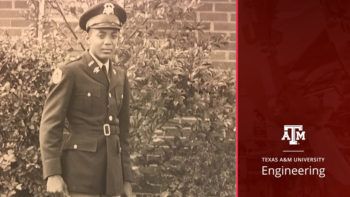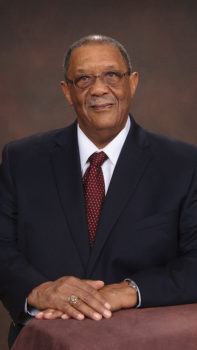One Of Texas A&M’s First Black Students Reflects On Experiences

Before he was a student at Texas A&M University, Sam Williams knew that he loved to work with his hands — even helping with his uncle’s painting and remodeling work at the age of five.
That love grew into a desire to attend engineering school, which lead Williams to attend Texas A&M and create his own legacy as one of the first Black engineering students and athletes in the school’s history.
“While a junior in high school I was sitting in (my dad’s) office discussing colleges and he asked me, ‘What about A&M?’” Williams said. “I applied and got accepted. I didn’t know that I was going to be one of the first students to attend Texas A&M as an African-American.”
Williams started as a student at Texas A&M in 1964 during James Earl Rudder’s tenure as president of the university. At that time, the Corps of Cadets was still a compulsory part of enrollment for all students. Williams, who had attended an all-Black high school, didn’t know what to expect of Texas A&M or the military-school lifestyle.
“In high school I was one of the so-called ‘big man on campus’ types, and then I got to A&M in the Corps and it was totally different,” Williams said. “You couldn’t leave or go home without a pass, and I said to myself, ‘What have I gotten myself into?’”
As a student, Williams struggled with balancing the rigors of cadet life, working to make the track team and being an engineering student. He eventually quit the Corps when it was no longer mandatory. Just as he was leaving the Corps, Williams suffered a difficult blow to his engineering career when the assistant dean of engineering at the time, Cliff Ransdell, felt his struggling academic performance wasn’t strong enough to let him stay enrolled.

“That was the most difficult time of my life,” Williams said. “I came back home to Houston and (my parents) explained to me that I wasn’t going to go sit around on my butt in this house. So I enrolled in a technical school.”
Not one to quit easily, Williams later made an appointment with Ransdell to show him his outstanding academic performance in technical school. Ransdell, having taught Williams in his engineering graphics class, decided to give him one more chance as an engineering student. After he returned, Williams was accepted into the industrial technology program.
“I started really focusing on industrial technology,” Williams said. “It was kind of right up my alley. It prepared (me) to be in management in manufacturing, field services and technical sales.”
Williams and his roommate J.T. Reynolds joined the football team shortly after he came back to campus. The two would go on to become the first Black football players and lettermen at Texas A&M in 1967 and 1968. For Williams, this wasn’t his first attempt to play on the field.
Years earlier he had suited up for freshman practice, only to be told by head coach Hank Foldberg that Texas A&M would not be integrating its football teams. Even after surviving a difficult conditioning process, Williams and Reynolds never traveled and only played sparingly in home games.
After leaving Texas A&M in 1969, Williams severed most ties with the school and began a successful career with General Electric (GE) as a sales engineer and contract administrator. He later moved to Houston and left GE, eventually going into business for himself as the CEO of a small manufacturing and engineering consulting service.
“I had very little connection with A&M in my early career,” Williams said. “I didn’t care. It was a difficult time that I went through at A&M, and when I walked out of there, it didn’t matter when I ever came back.”
After his business closed, Williams found an unlikely connection to the university. A chance visit with a fellow former student provided him with an invitation to a Texas A&M networking breakfast. The connections he fostered there helped him return to the corporate world, where he spent 21 years as the senior representative at Emerson’s subsidiaries Automatic Switch & ASCO Services Inc.
After reconnecting with the Texas A&M network, Williams later came into contact with former Texas A&M President Bill Mobley. After visiting campus at Mobley’s invitation in 1989 to discuss racial issues in education with other Black former students, Williams received an invitation to co-chair the president’s Former Student Advisory Committee on Black issues. Williams served on the committee until 1993.
Williams later co-founded the Caring Aggies Mentor Program in 2006, which mentors students from third grade through high school and introduces them to career opportunities while encouraging them to complete high school and pursue higher education. Many of the program’s graduates have gone on to college and trade schools, including Texas A&M.
From first-hand experience, Williams knows how one act of caring can change someone’s life.
“I will always be thankful for Dean Ransdell,” Williams said. “He was the one person that let me back into A&M to restart my academic career, and I will never forget that.”
This article originally appeared on the College of Engineering website.





